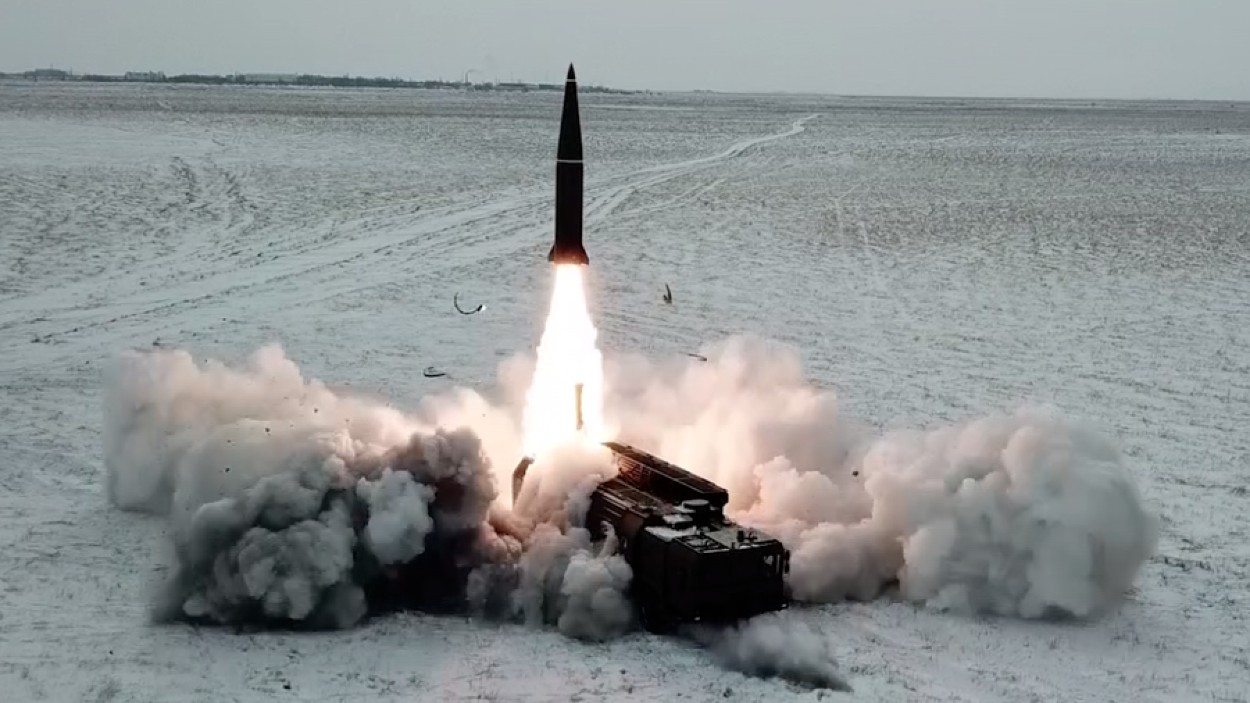On the night of February 16, Russian forces launched coordinated strikes on key Ukrainian military infrastructure, targeting logistics hubs, strategic bridges, energy facilities, and airfields.
One of the primary targets was the Zatoka combined bridge, a crucial link between Odessa and the Budjak region, serving as a strategic route for Western weapon deliveries from Romania into Ukraine.
Russia struck the bridge with two Iskander-M missiles. The first reportedly hit the supporting structures of the road span, causing structural damage. According to the pro-Russian Iznanka Telegram channel, an initial assessment suggests the bridge’s frame has been weakened, necessitating restoration work.
Notably, Ukrainian forces neutralized the second Iskander-M missile using electronic warfare, causing it to detonate over the Black Sea near the bridge.
Any disruption to traffic on the Zatoka bridge could significantly hinder the flow of NATO arms and ammunition to Ukrainian forces in southern regions, particularly around Odessa.
Iskander-M Failures
This is not the first Russian strike on the bridge. On October 31, 2024, Russian forces launched two Iskander-M ballistic missiles from Crimea, along with eight Kh-59/69 air-to-surface missiles from tactical aircraft over the Black Sea.
The strike was part of a broader offensive that also included ballistic missile attacks from Rostov-on-Don Oblast targeting Kramatorsk. Ukrainian air defenses claimed to have intercepted two of the eight guided missiles during that assault.
Additionally, in February 2023, Russian forces used a drone boat to attack the bridge, marking a notable shift in tactics.
Russia’s Iskander-M tactical ballistic missile has proven to be one of the most effective weapon systems in the Ukraine war. Its quasi-ballistic trajectory delays radar detection, while its high supersonic terminal speed minimizes the window for interception.
Additionally, the missile’s evasive maneuvers in the terminal phase significantly reduce the likelihood of a successful interception.
In March 2023, Ukrainian Air Force spokesman Yuriy Ignat acknowledged that Ukraine’s air defense systems were unable to intercept Russian ballistic missiles such as the Iskander-M, S-300, and Smerch rockets. Ukrainian officials have since repeatedly emphasized the difficulty of intercepting the Iskander-M.
In August 2024, General Oleksandr Syrskyi, Commander-in-Chief of the Ukrainian Armed Forces, reported that the interception rate for ballistic missiles—including the Iskander-M, Tochka-U, and KN-23—stood at approximately 4.5%.
However, there have been instances where Ukrainian air defenses have reportedly successfully intercepted Iskander-M missiles.
On December 20, 2024, following a Russian airstrike on Kyiv, Ukrainian forces claimed to have downed all five Iskander-M/KN-23 ballistic missiles aimed at the capital—an assertion that, if verified, would represent a rare and significant air defense success.

Achilles Heel
The Iskander-M’s flight characteristics make it extremely difficult to intercept with air defense missile systems. However, the missile may have a potential Achilles’ heel—its terminal radar imaging guidance system.
The missile relies on a combination of inertial navigation and satellite navigation (SATNAV), such as GPS or GLONASS, to reach the target area. Jamming these satellite signals can disrupt the missile’s ability to determine its precise position, which is crucial for delivering accurate strikes.
Terminal Guidance & Potential Weaknesses
During the terminal phase, the Iskander-M switches to a more precise guidance method, which could be:
-
Radar imaging or optical imaging (using correlation with pre-loaded target images).
-
Passive radio frequency (RF) homing if the target emits RF energy.
The type of terminal guidance is determined before launch, meaning the missile is limited to a single seeker type per mission.
-
Optical Imaging Seeker: Practically immune to jamming but only effective in good visibility conditions.
-
Radar Imaging Seeker: Vulnerable to radio noise jamming, which can create false signals or interfere with targeting, though its high speed and ballistic trajectory make this challenging.
-
Passive RF Seeker: Can be defeated if the target switches off RF emissions, rendering the homing ineffective.
Disrupting The Missile’s Accuracy
If the terminal seeker is jammed or rendered ineffective, the missile defaults to inertial navigation and SATNAV to strike its last known coordinates. However, since SATNAV signals are often jammed in the target area during an attack, disabling the terminal seeker significantly reduces accuracy.
Implications For Russian Targeting
At night or in bad weather, optical seekers become unreliable, forcing Russian forces to use radar imaging seekers instead.
This makes the Iskander-M vulnerable to RF jamming, especially when combined with SATNAV disruption, potentially degrading its effectiveness in poor visibility conditions.
EW – A Cat & Mouse Game
Ukrainian forces likely employ a combination of active jamming, which emits signals to disrupt RF imaging, and passive measures, such as deploying decoys or false targets to mislead incoming missiles.
However, electronic warfare (EW) is a constant cat-and-mouse game, with both sides continuously adapting their tactics. The Iskander-M’s terminal-phase maneuvering makes sustained jamming more challenging, though this can be partially countered by increasing the power of jamming signals.
Effective EW requires substantial resources, including high-power transmitters, specialized equipment, and trained personnel—all of which can be difficult to maintain under combat conditions.
Western Help
Ukraine has received significant Western support in electronic warfare (EW), gaining access to some of the most advanced EW equipment and sensors available.
Recently, the French defense company Thales and Ukroboronprom established a joint venture in Ukraine to develop air defense technologies, radars, electronic warfare systems, tactical communications, and optical-electronic systems.
Conclusion
Despite occasional successes in countering Iskander-M missiles through electronic warfare (EW), the overall effectiveness of Ukrainian EW systems against them remains nuanced. The success rate varies from one engagement to another, depending on multiple factors, including the jamming techniques used, visibility conditions, the missile’s flight path, and the readiness of Ukrainian defenses at the time of an attack.
While Ukraine has managed to intercept some Iskander-M missiles, the overall interception rate remains relatively low.
- Vijainder K Thakur is a retired IAF Jaguar pilot, author, software architect, entrepreneur, and military analyst.
- VIEWS PERSONAL OF THE AUTHOR
- Follow the author @vkthakur




